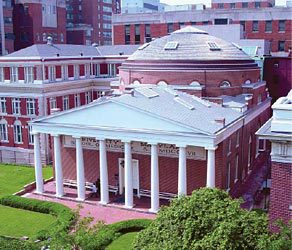Introduction
The University of Maryland Baltimore (UMB) is the oldest public medical school in the United States. The school began as a college of medicine back in 1807. Over time, other schools were added. The school of law started in 1824 and the dental school started in 1840. The dental school is considered the oldest school of dentistry in the country. The school of pharmacy began the next year in 1841. The next school, the school of nursing came along later in 1889. Later, Louisa Parsons brought the training she received as a colleague of Florence Nightingale to UMB in 1898. In 1918, the graduate school was initiated and the last addition, the school of social work opened its doors in 1961.

